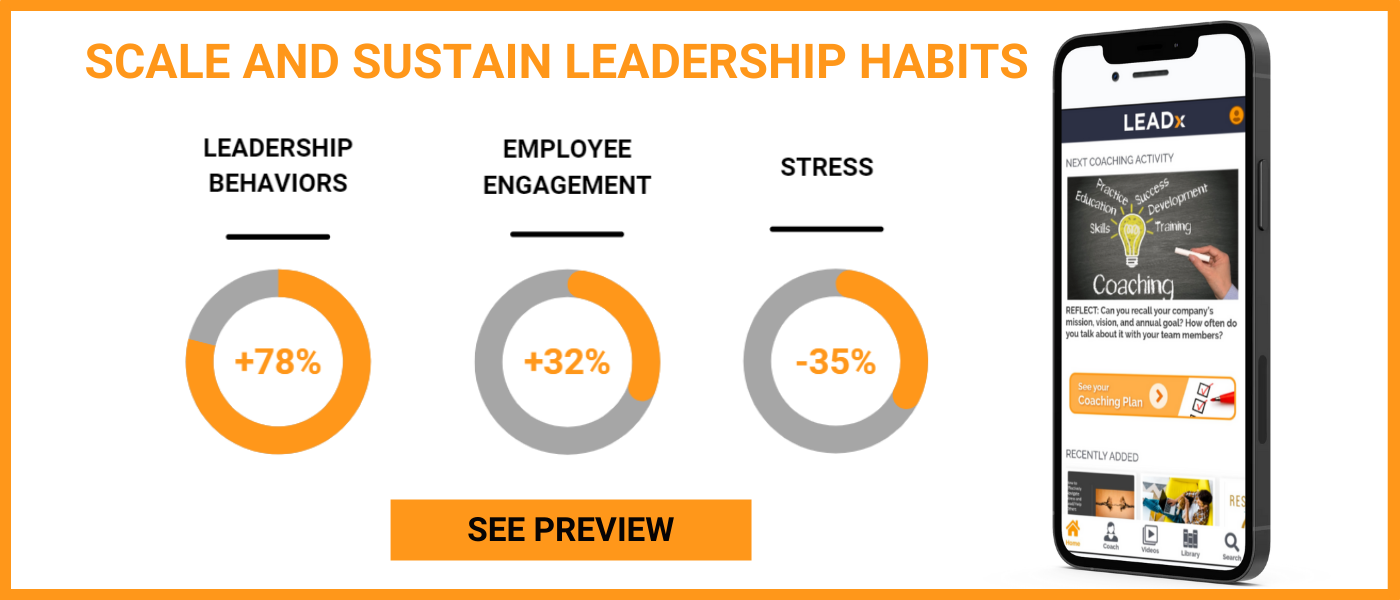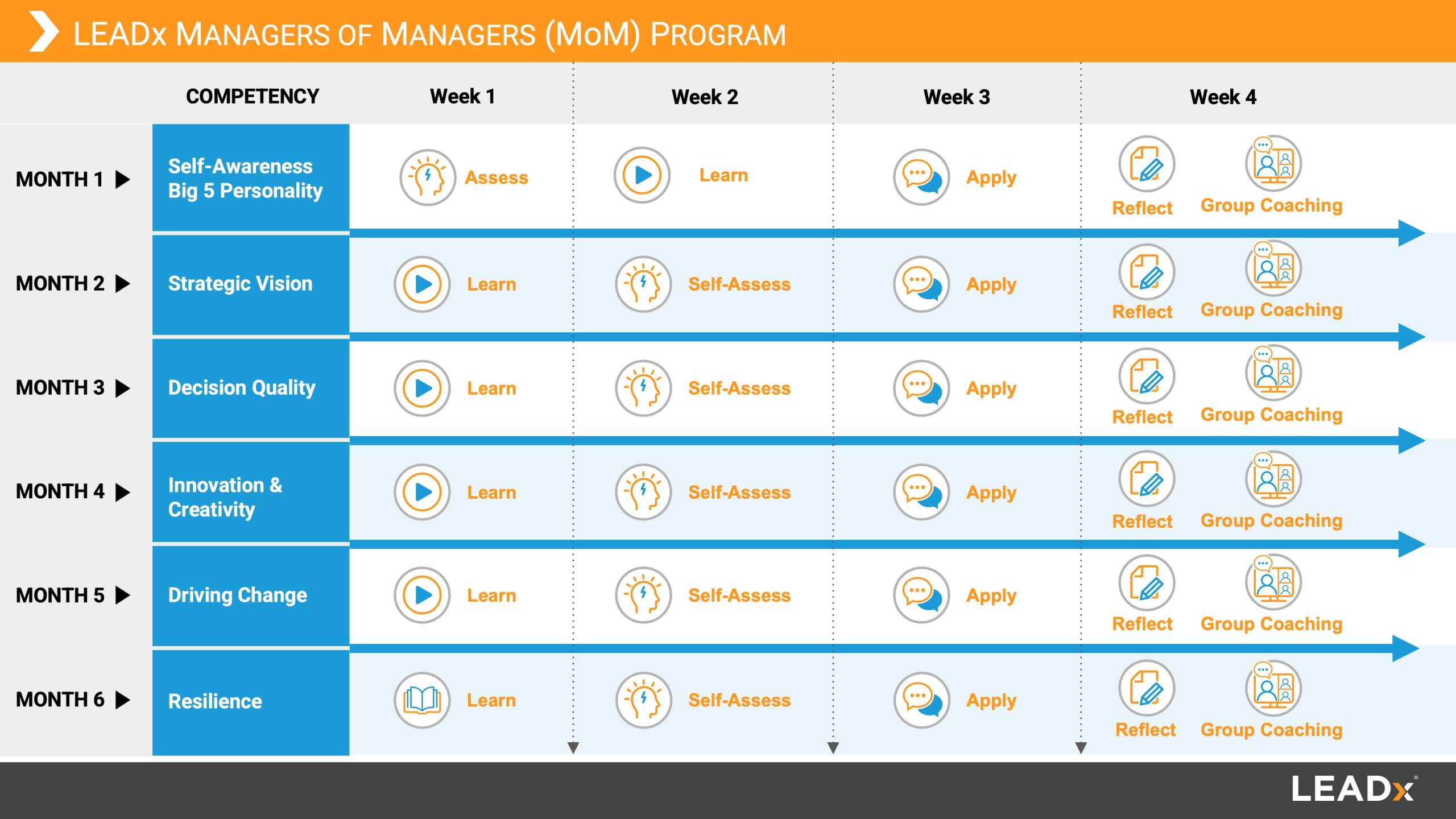
Middle managers are really important—even more so than previously thought. According to Scott Mautz’s book, Leading from the Middle, middle managers account for 22% of variation in revenue. Replacing a bad middle manager increases productivity by 12%, and employees with a strong middle leader are 20% less likely to leave when offered a job elsewhere.
But it’s really hard to be an effective “manager of managers.”
 Middle managers face an unparalleled barrage of opposing ideas, information, and conflict from bosses, peers, and direct reports—all at the same time. This comes at a cost. In constantly switching roles (from boss to peer to direct report), middle managers report extreme stress and emotional challenges. Mautz writes that 51% of middle managers say they worry about work constantly, and 43% describe their job’s pressure as “excessive.”
Middle managers face an unparalleled barrage of opposing ideas, information, and conflict from bosses, peers, and direct reports—all at the same time. This comes at a cost. In constantly switching roles (from boss to peer to direct report), middle managers report extreme stress and emotional challenges. Mautz writes that 51% of middle managers say they worry about work constantly, and 43% describe their job’s pressure as “excessive.”
Middle managers are more important than ever before, but it’s never been harder to be one. That’s why designing and delivering top-notch middle manager training isn’t just a “nice to have.” It’s a business imperative.
The Six Skills Middle Managers Need Most
The skills middle managers need are very different from those of brand-new managers. Typically, L&D places a lot of effort and focus on new manager skills. But, to leverage the power and influence of middle managers, L&D must help them develop specific skills that separate effective middle managers from effective frontline managers. Think more strategic, more creative, and more resilient.
In designing your middle manager training program, focus on the following skills.
- Self-Awareness – “Know thyself” isn’t just good life advice; it’s essential for effective leadership. The best middle managers are perceptive and self-aware. They understand that how they show up matters. They can observe their strengths, weaknesses, triggers, behavioral patterns, and emotions rather than being caught up in them. Helping leaders become more self-aware involves getting into leaders’ mindsets and limiting beliefs. Leaders must develop an understanding of why they act the way they do and how it might get in the way of behavior change. Assessments are a helpful tool in cultivating self-awareness. Assessments—completed by the leaders themselves, their managers, or peers—provide useful feedback on blindspots and weaknesses. Self-awareness is the starting line on any behavior-change journey. With strong self-awareness, the development of all skills becomes easier.
- Strategic Vision – “Big picture thinking” is a critical middle management skill that frontline managers don’t necessarily rely on as often. Developing a strategic vision for the future requires being able to “see the forest, not just the trees.” Managers moving from frontline leadership to middle management are often used to spending much of their time and energy deep in day-to-day team operations. Train these middle leaders to zoom out and strategically craft and communicate a compelling vision for future success.
- Decision Quality – When you boil effective leadership down to its essence, it’s really about one thing: making good decisions. We make thousands of decisions every day—some inconsequential, some with the potential for lasting impact. Leaders face decisions about all sorts of things, from how to approach a difficult conversation with an underperforming team member to strategic decisions that impact the entirety of the business. As leaders climb the ranks, their decisions become increasingly impactful. Train middle managers on how to leverage data and weigh options for potential outcomes.
- Innovation and Creativity – As the Leadership Circle Profile data shows us, leaders with a creative orientation are more effective. Creative leaders see opportunities where others see obstacles. They lead from a place of possibility rather than assumptions about how a leader should behave. This unlocks innovative thinking and problem-solving—key imperatives for success in an ever-changing and fast-paced environment. Contrary to popular belief, creativity is not something you either have or don’t. It is a learned skill, one that middle managers need to lead their teams into a future that demands it.
- Driving Change – We live in a volatile, uncertain, complex, and ambiguous world. As such, the most effective middle leaders know how to drive and thrive through change. They are adaptable and nimble and know how to rally team members around a shared vision of future outcomes in the midst of present uncertainty. Middle leaders must learn how to make big decisions based on the information available and then communicate change in a way that includes—rather than alienates—their teams. How each middle manager responds to change casts a ripple down to the front line.
- Resilience – Middle managers face pressure from above, below, and laterally from peers. That’s why, as mentioned before, 51% of middle managers worry about work constantly, and 43% describe their job’s pressure as “excessive.” Increasing resilience, or the ability to metabolize adversity into opportunity, is a key skill needed to thrive as a leader. Pressure and stress will always be present in the leadership journey. By learning strategies to increase resilience, leaders can better set themselves up to flourish in the midst of difficulty and “bounce back” more quickly following a hard season.

How to Create Systems of Development for Middle Managers
Learning alone doesn’t create behavior change. It’s not enough for leaders to know “Design Thinking” or “ADKAR Change Management” models. They must be able to apply those models on the job. Knowledge needs to become action, and action needs to become habit.
To build habits that stick, middle managers need systems of behavior change that support their development often over time. That means leveraging micro-learning, micro-coaching exercises, assessment, nudges, self-reflection, group coaching, peer learning, and more.
Here are five tactics to leverage in order to build systems of development for middle managers.
- Micro-learning. Learning doesn’t have to take leaders away from their work. It doesn’t even need to occur in a classroom. Often, the best way for people to learn “in the flow of work” is with micro-learning—small, easy-to-digest pieces of content. Content that takes between two and five minutes to consume is most effective for micro-learning, according to the Association for Talent Development.
- 3-to-1 Learning. The 3-to-1 Learning Model is the best way to help leaders move from “knowing” to “doing.” It involves planning three application exercises for everyone learning event. These could include role-playing, on-the-job practice, reflection, and discussion. The curriculum in the section above shows the 3-to-1 model in action.
- Nudges. Little reminders to act, or “nudges,” go a long way in establishing new behaviors and solidifying habits. Developing leaders, after all, is about creating habits. And new habits require “cues.” Giving middle managers nudges to engage with learning or application activities will help them build skill practice into their workdays.
- Live group coaching and peer learning. Giving peers the opportunity to learn and grow together is crucial for leadership development. Managers are more likely to retain and apply new information when they can discuss learnings and real-world case studies with peers. Adding a coach to a group setting only makes peer learning more impactful, as managers can learn from one another while also benefitting from the expertise of a seasoned coach.
- On-demand coaching. Coaching is one of the best ways to offer leaders personalized support and accountability. As the industry recognizes the need for on-demand coaching, offerings are becoming more widely available that meet managers where they are. Texting or live chatting with a coach deepens learning pathways and offers support for leaders as they navigate roadblocks and practice new skills.

Managers of Managers Stand at the Center of Influence
Middle managers are huge levers of influence—up, down, and with peers. They are arguably the most influential leaders within an organization, and unfortunately, they are often the most under-supported. Give them a full system of support as they develop key skills, and watch them drive serious results above, below, and beside them as a result!






